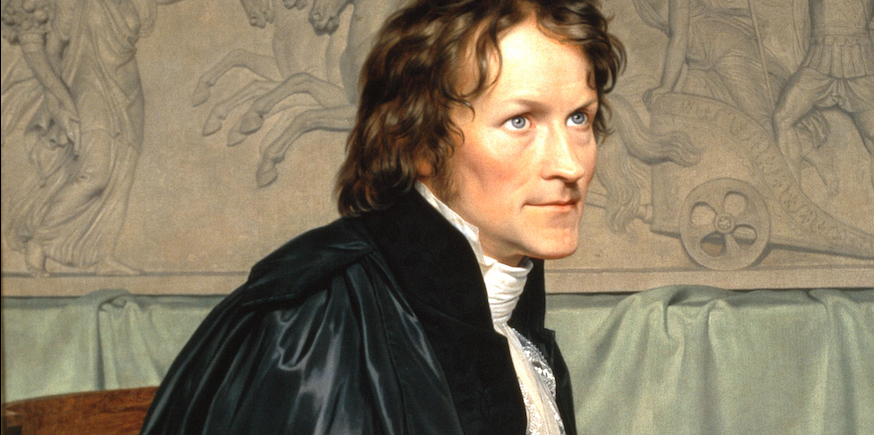
Bertel Thorvaldsen
Thorvaldsen was one of the most famous artists in 19th century Europe. He created works of art for the Pope, Napoleon and many of the royal families of Europe.
The sculptor Bertel Thorvaldsen (1770-1844) grew up in Copenhagen in poor circumstances. He was admitted to the Royal Academy of Fine Arts at a young age and travelled to the cultural centre of the age, Rome, where he carved out a career for himself as an international artist. He returned to the city of his birth as a world-famous superstar who had created works of art for the Pope, Napoleon and the royal families of Europe.
Thorvaldsen’s sculptures can be found today all over the world in major museums of art such as the Louvre in Paris, the Metropolitan Museum in New York, the Victoria & Albert Museum in London, the Eremitage Museum in St. Petersburg and the Alte Nationalgalerie in Berlin. But Thorvaldsens Museum in Copenhagen is the only place where Thorvaldsen’s art is shown in its entirety.
Thorvaldsen’s life
Thorvaldsen was born in Copenhagen on 19 November 1770. His father had immigrated from Iceland, and made his living as a carver of ship decorations in wood. His mother was the daughter of a parish clerk near Lemvig in Jutland. The young Bertel was admitted to the Royal Academy of Fine Arts in Copenhagen at the early age of 11, where he quickly showed unusually great talent.
After he had completed his education a scholarship enabled him to study further in Italy. His study period in Rome became his working life. The order book filled up, and soon he was one of Europe’s best known artists. He spent a good forty years in Rome – no wonder he celebrated the date of his arrival in the city, 8 March 1797, as his ‘Roman birthday’!
Not until 1838 did Thorvaldsen return to Denmark. After coming home he became the first – and to this day remains the only – person to be granted ‘freedom of the city of Copenhagen’. On 24 March 1844 Bertel Thorvaldsen died 73 years old, struck down by heart failure as he attended the overture of the evening’s performance at the Royal Danish Theatre. His coffin was placed in a chapel in the Church of Our Lady, and on 6 September 1848 it was transferred to the burial chamber in the courtyard of Thorvaldsens Museum shortly before the museum opened on 18 September 1848, so that the sculptor could rest eternally surrounded by his art.